Kit for PDMS Surface Modification
Section Overview
In collaboration with Clemson University and the Pennsylvania State University, we have developed a Surface Modification Kit, which allows for durable hydrophilization of various polydimethylsiloxane (PDMS) surfaces.
The procedure is based on technology developed by the group of Professor I. Luzinov (Clemson University). It employs a macromolecular anchoring layer approach for grafting hydrophilic polymer layers onto hydrophobic PDMS surfaces.
One of the possible applications for hydrophilic PDMS surfaces is microcontact printing. Figure 1 compares hydrophilic ink imprints, which have been created using untreated, oxygen plasma treated and kit modified PDMS surfaces.
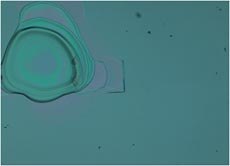
Untreated PDMS surface
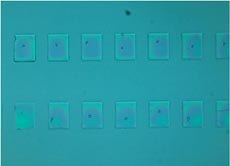
Oxygen plasma treated PDMS surface: 1st imprint
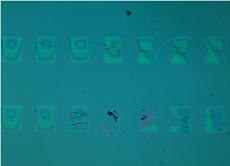
Oxygen plasma treated PDMS surface: 4th imprint
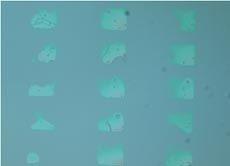
Kit modified PDMS surface: 1st imprint
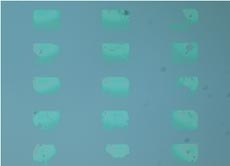
Kit modified PDMS surface: 10th imprint
Figure 1. Imprints of a hydrophilic electroceramic ink on metal substrate created using differently treated PDMS surfaces. (Courtesy of Professor Susan Trolier-McKinstry, the Pennsylvania State University)
Technical facts and applications of this technology can be found in the following publications:
- Zdyrko, B.; Klep, V.; Luzinov, I. Material Matters, 2008, 3(2), 44.
- Nagata, S.H.; Ko, S.W.; Hong, E.; Randall, C.A.; Trolier-McKinstry, S. J. Am. Ceram. Soc., 2006, 89, 2816.
- Nie, Z.; Kumacheva, E. Nature Materials, 2008, 7(4), 277.
Surface Modification Kit
Product No. 701912
Kit Components
Solution A (Glycidyl methacrylate based polymer) 10 mL
Solution B (Acrylamide/acrylic acid based polymer) 4 mL
Recommended Solvents (not included)
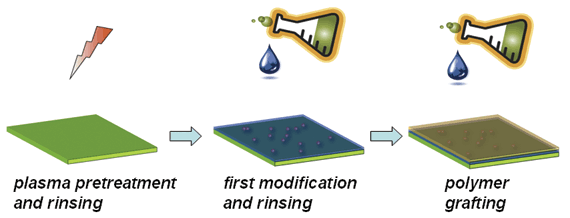
Figure 2.Schematic of the PDMS surface hydrophilization process.
Procedure
- Pretreatment - PDMS surface should be activated using a low frequency air plasma treatment for 1 minute (Recommended plasma cleaners: Product Nos. Z561673, Z561681, Z561657, and Z561665).
- Prerinsing - The plasma activated PDMS sample should be rinsed by washing with ethanol (Product No. 270741) for at least 10 minutes. The rinsing procedure should be repeated 3 times. Then, the sample should be air-dried for at least 15 minutes. The water contact angle of the resulting activated PDMS surface is expected to be between 25 and 40°.
- First Modification Step - The surface of the horizontally positioned sample prepared in the previous step should be covered with Solution A, typically ~1 mL per square inch of the surface. The sample should be dried under ambient conditions for 20–30 minutes and annealed at 110 °C under nitrogen or argon for 30 minutes.
- Rinsing - The annealed sample should be rinsed three times with 2-Butanone (Product No. 34861) for 10 minutes each time. Then it should be air-dried for at least 30 minutes.
- Polymer Grafting - 6 mL of ethanol must be added to the container containing Solution B. Stir the mixture to homogeneity. The surface of the horizontally positioned sample prepared previously should be treated by completely covering the area to be modified with the homogeneous solution, typically ~1 mL per square inch of the surface. The sample should be dried under ambient conditions for 20–30 minutes, then annealed at 80 °C for 14 hours. Finally, the unattached polymer should be removed from the sample by a thorough rinse with water (Product No. 320072) and the sample air-dried at room temperature.
After treatment, water should effectively wet the surface as the water contact angle is expected to be between 25 and 35°. The resulting PDMS surface should be wettable by hydrophilic inks and appropriate for multiple printing applications.
如要继续阅读,请登录或创建帐户。
暂无帐户?